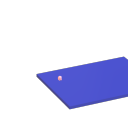@ddw_music This doesn't invalidate your larger point, but RE double precision floating point on Arduino, that reference is needs updating. I used a MKR Zero because it supports 8 byte doubles. You can see in my code that line 12 reports that the size of a double is 8 bytes, and that line 15 generates 16 correct digits of pi.
For fun I tested c# (which agrees with SC and Pd64) and Java (which agrees with Arduino) so I'm not quite ready to join the "Arduino is wrong" team. I also can't coax Excel into the former camp, but that doesn't mean that it can't be done because I found several examples of how to surface that base 2/base 10 mismatch, e.g. (43.1 - 43.2) + 1.
My apologies to the folks who came here to read about Pd 
Edit: Both Java and Arduino display non-zero digits past the 7th digit when 0.1 is stored as a single-precision float, so I find it hard to believe that there's special-purpose code to suppress what I'm gonna refer to from now on as "SuperCollider panic" 


 ) in the code of Katja's Pd-double, and Pd-Spagetties is double, too. (dev stopped, I never tried this)
) in the code of Katja's Pd-double, and Pd-Spagetties is double, too. (dev stopped, I never tried this)
